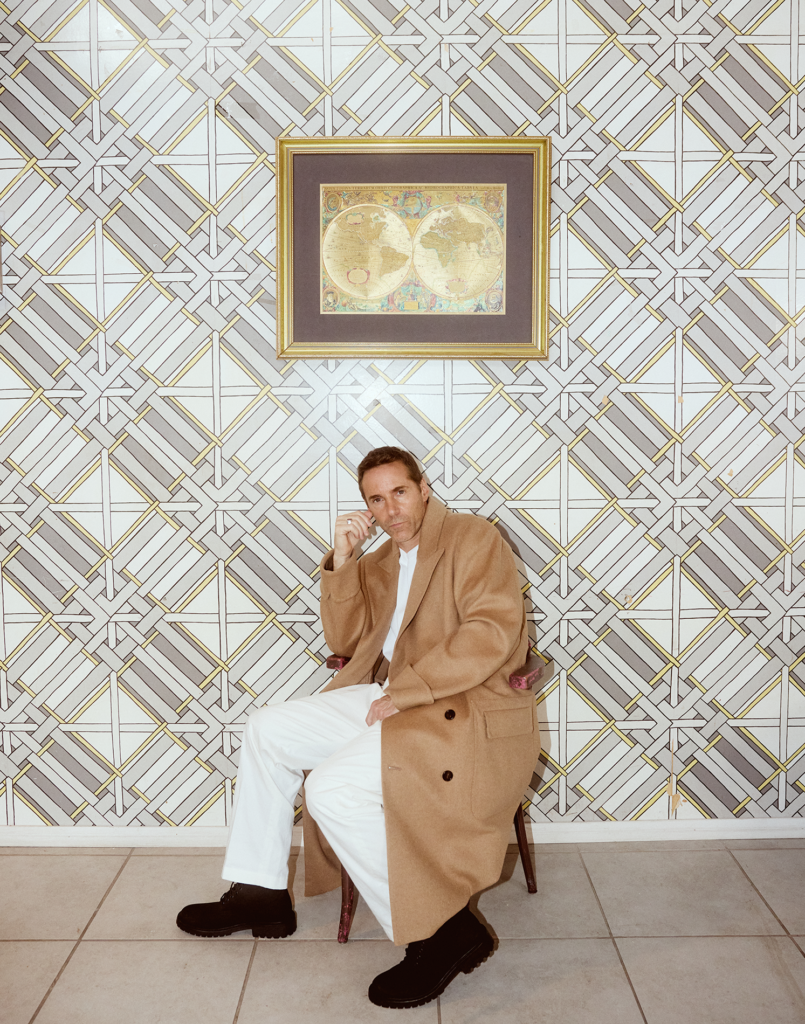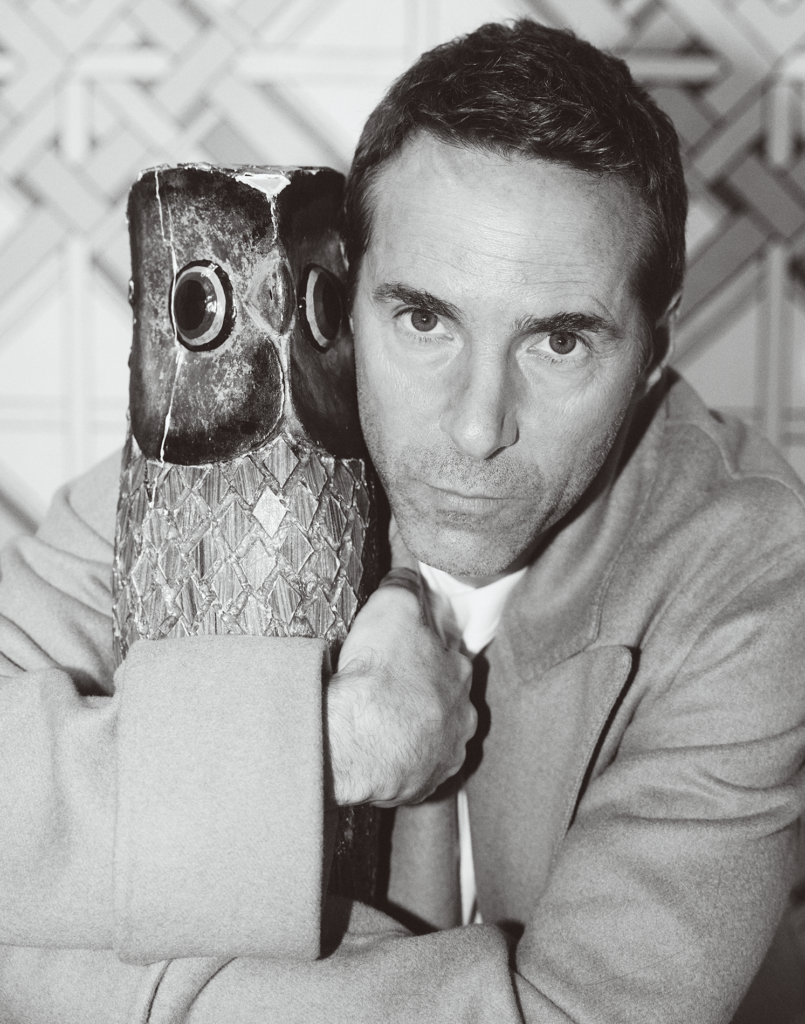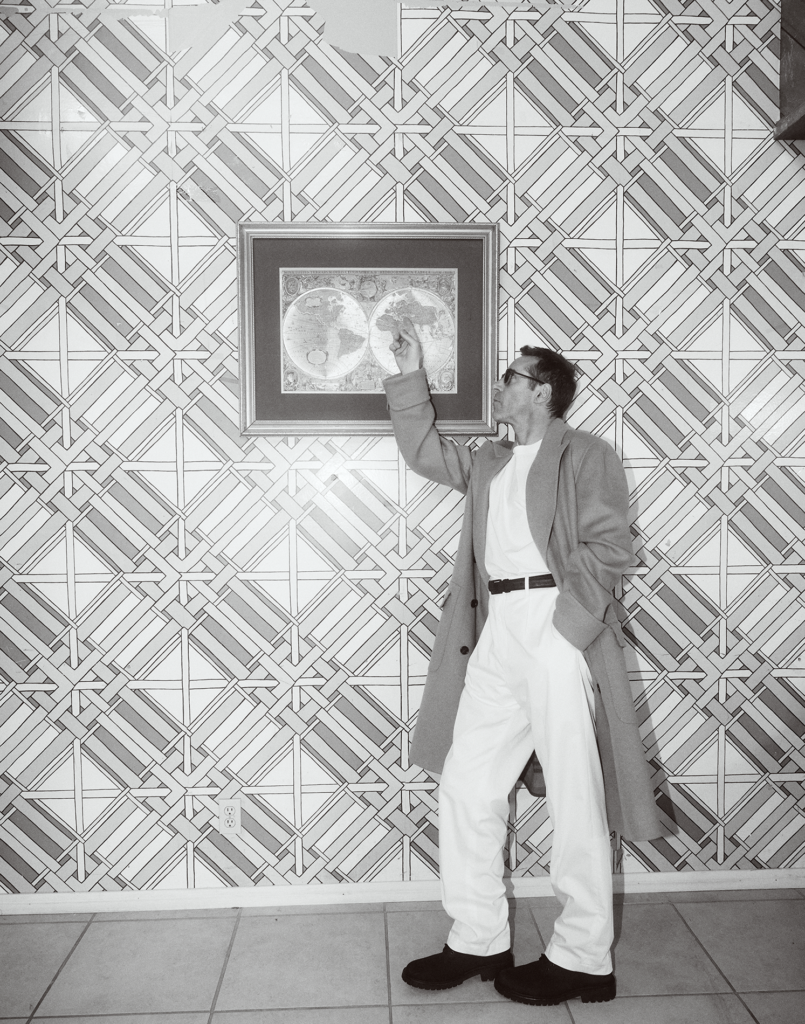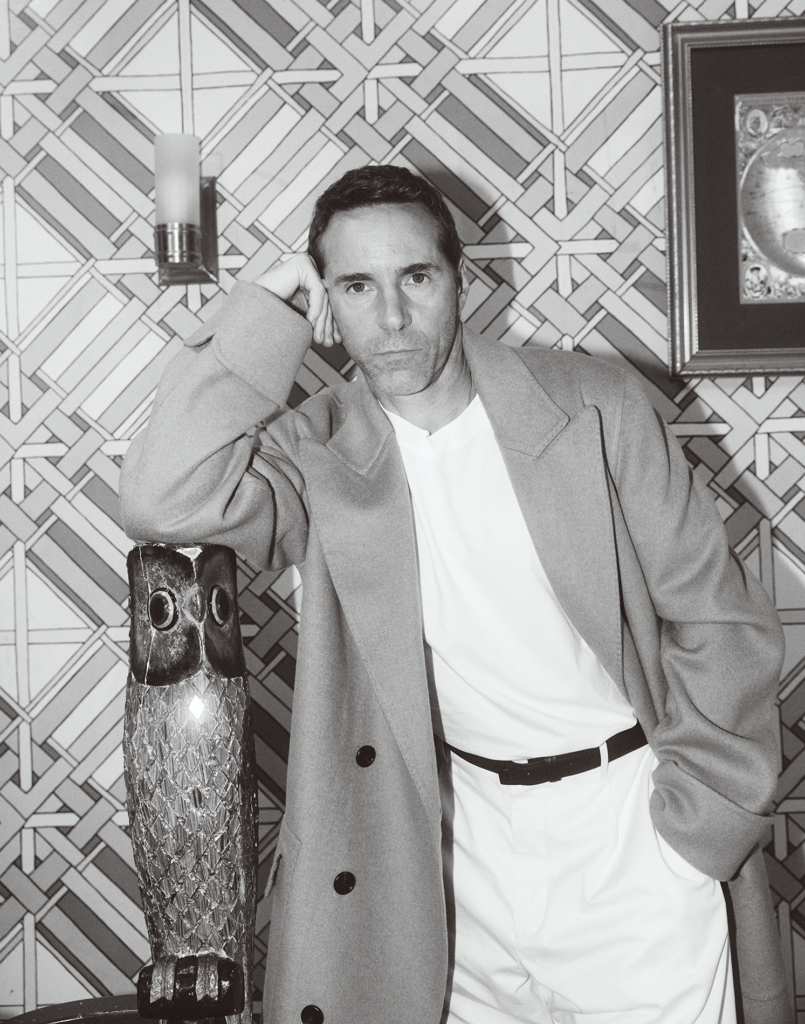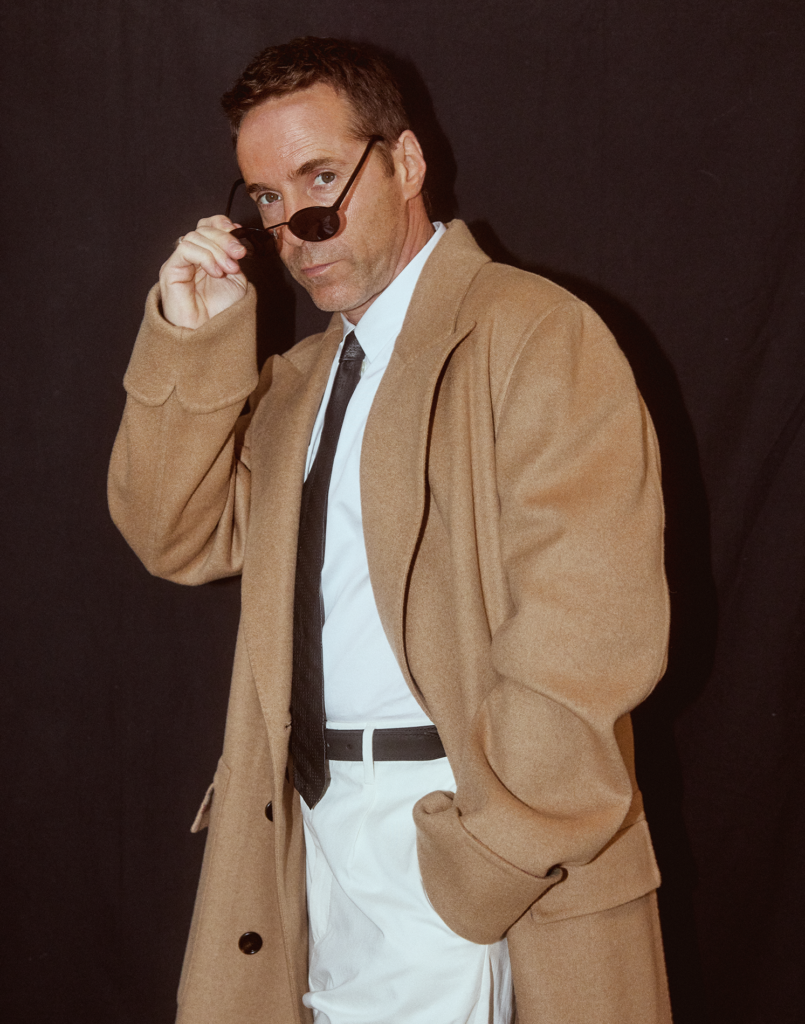
Alessandro Nivola
stars in
Films
Kraven The Hunter
&
The Brutalist
Photography Sami Drasin
Fashion Editor Deborah Ferguson
Interview by Stella Hofferman
Alessandro Nivola gives breath-taking performances in two highly-anticipated films this month! In theaters now is J.C. Chandor’s Kraven the Hunter, the adaptation of Marvel’s comic book character of the same name. Nivola plays The Rhino, a human-animal hybrid best known as a nemesis of Spider-Man, who will be facing off against Aaron Taylor-Johnson’s Kraven.
December 20th–Just one week after the premiere of Kraven the Hunter–Brady Corbet’s Academy Award-nominated epic The Brutalist also starring Nivola will be hitting theaters alongside it. The SAG award-winning actor acts alongside Adrien Brody in the three-and-a-half hour long historical drama following a Jewish-Hungarian immigrating to America after the Holocaust. Director Corbet as well as the ensemble cast has garnered mass acclaim from critics and festival audiences alike.
In this interview, the actor meets with us to discuss both Kraven the Hunter and The Brutalist, and his process in preparing and filming for these two very distinct projects so close together.
SH: How did you develop the character of Attila? Were there any influences or other characters that informed this performance?
AN: Like almost all my performances, my preparation began with my voice. Attila came to America ten or fifteen years before his cousin Laszlo (Adrien Brody). He has worked hard to assimilate into American culture – he dresses like an American, he has changed his name from Molnar to Miller, he has married a shiksa and converted to Catholicism. And by now, he can almost pass…but not quite. And it’s that not quite that was the most important element of the character. The insecurity that comes from trying too hard to fit in. So, it was important that his voice be the voice of someone who is trying very hard to sound American, but not quite succeeding. I searched for interviews with Hungarian immigrants who had a kind of colloquial urban American accent with traces of their original Hungarian which they are trying to hide. It turns out there are many very accomplished Hungarian cinematographers, and I settled on one named Andrew Laszlo who shot the cult film The Warriors as well as the original Shogun TV series. Andrew himself had Americanized his name from Laszlo Andras and so much about his character and attitude were a perfect model. I listened to recordings of his interviews for many hours and the mix of swagger and insecurity in his voice really opened the whole psychology of Attila for me.
SH: Were there any notable or informing moments on set while filming The Brutalist?
AN: Adrien and I had never met before working together on The Brutalist. But we were both instinctively very physical with each other in a way that immediately suggested a long and deep family bond. When we shot his arrival off the bus, we were tactile with each other without ever having discussed it. We weren’t careful. That informed the entire relationship going forward. Like we’d grown up as siblings with no regard for the boundaries of personal space.
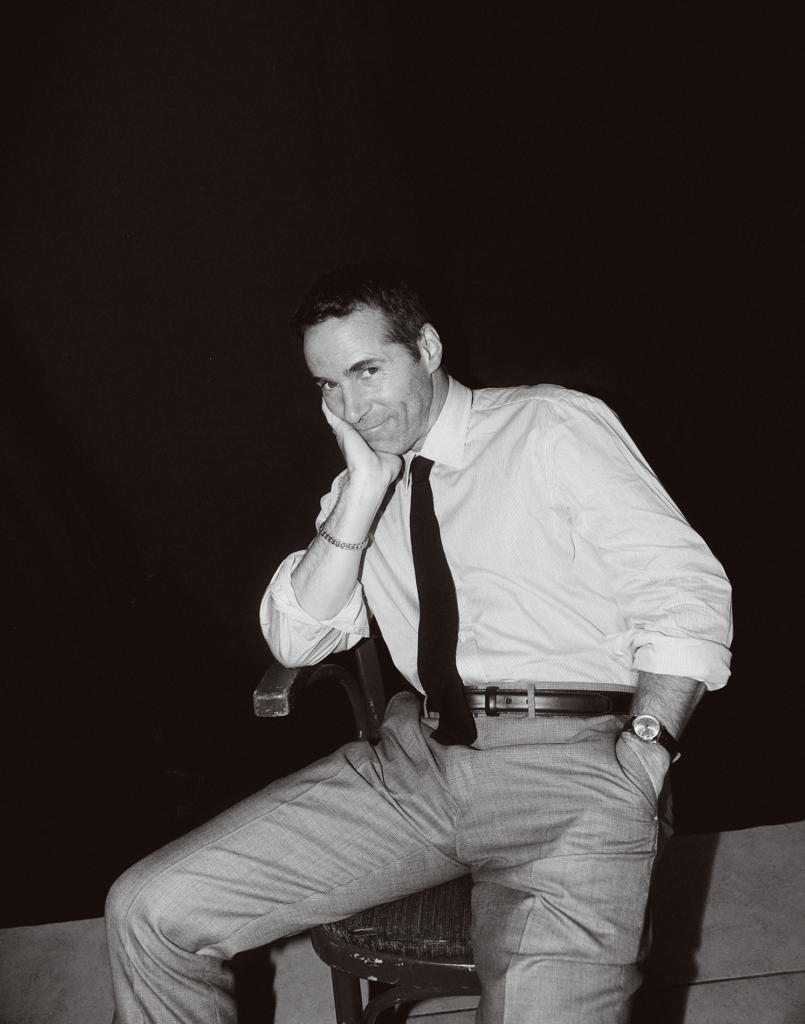
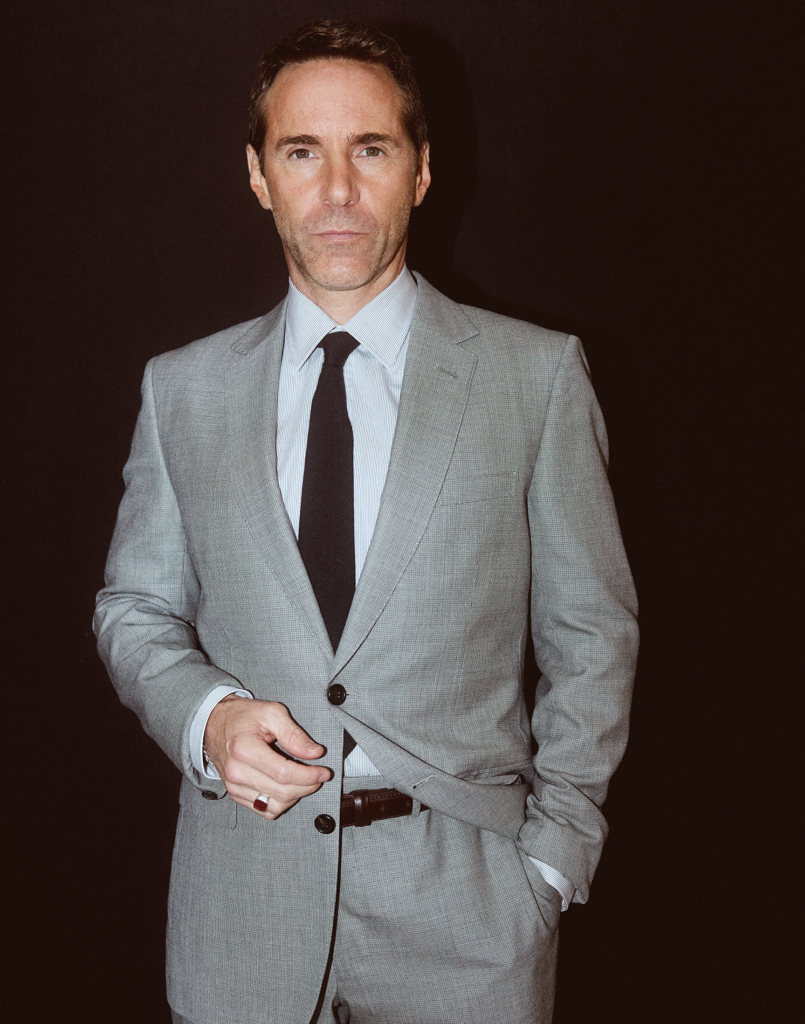
suit & shirt: DUNHILL, Tie: vintage
SH: Tell me about the process of filming the kitchen scene: Was it improvised, or choreographed?
AN: The kitchen scene was almost entirely improvised by both me and the cinematographer. I had suggested to Brady that Emma (who played my wife) and I have a couple of swing dance lessons to give us an idea of how people moved to music in the ‘40s. So much of the stuff I saw the teacher do was playful and comic – chicken dances and goofy shit. It really seemed like there was no limit to how far I could push it. I also liked the idea that Attila is always showing off for Laszlo – trying to impress him with his clothes, his shop, his wife, his life. So, all of the dancing was for him. And the drag stuff was all part of the ambiguity of the scene – joking and suggestive, celebratory, and menacing. Attila has a history of sexual jealousy of Laszlo who apparently stole one or more of his girlfriend’s when they were adolescents, and he suspects him of coveting his wife. So, he compulsively urges him to dance with her – like a drunken test. Daring him to do the thing he knows he wants to do. It was totally free and loose. We could go anywhere in the room and do anything and say anything and Lol the DP followed us. It was cut together with jump cuts that didn’t follow linear time so there were no restrictions at all. A really exciting scene to play.
SH: How does a lower-budget production operate differently, if at all, from other projects you’ve worked on?
AN: It’s all the same for me. Bigger budgets have bigger trailers and shoot more coverage. Often, it’s wasted shots that encourage too many editing cuts in a scene later. That’s about it. Oh – but you get compensated differently on bigger productions and often do the smaller films for less.
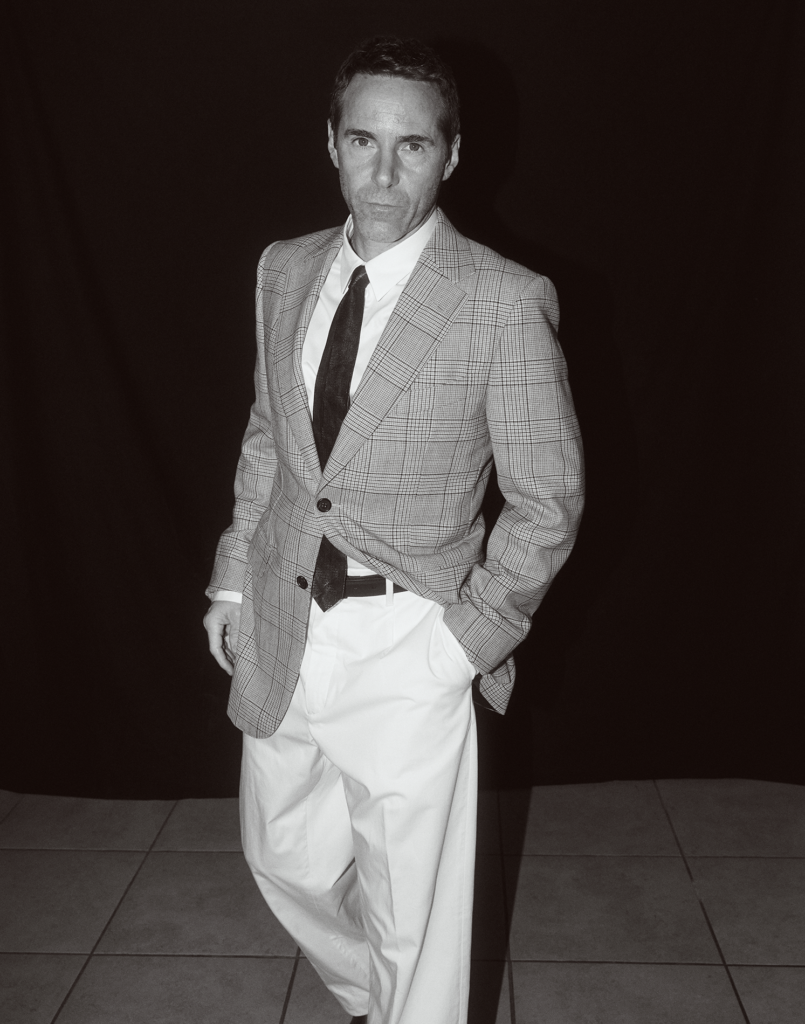
suit & shirt: DUNHILL, Tie: vintage, Boots: own
SH: What’s your take on the 15-minute intermission? Should more films utilize it?
AN: If any other movie should elect to have a three and a half hour run time…I recommend an intermission.
SH: Switching over to another upcoming project of yours, Kraven the Hunter–how do you prepare for a role in an action film? Is there any training involved?
AN: It’s no different. Maybe I try even harder to find an interesting character in what’s written so that the curiosity of my behavior can transcend. More detailed, more specific, more eccentric. In other words, more real. In this case, I was playing a Russian crypto currency farmer who had undergone a biochemical experiment to give himself strength. He had endured many years of humiliation for being sickly and weak and socially a little strange and he was willing to do anything to change the narrative of his life. I have a friend who is a brilliant Russian poet named Philip Nikolayev. He teaches at Harvard and often comes down to stay with me and Emily in Brooklyn. He has a very unique voice and accent and look, and I decided I was going to base the character on him. I had them make me a wig to look like his hair and I recorded him reading the entire script into my phone which I listened to throughout the shoot. It took a while for the producers to understand what the hell I was doing but they came around. I didn’t have any action in this movie. It’s all just scenes where I play with humor and menace. There is one huge fight at the end but that was a stunt double, so I just added my voice in ADR.
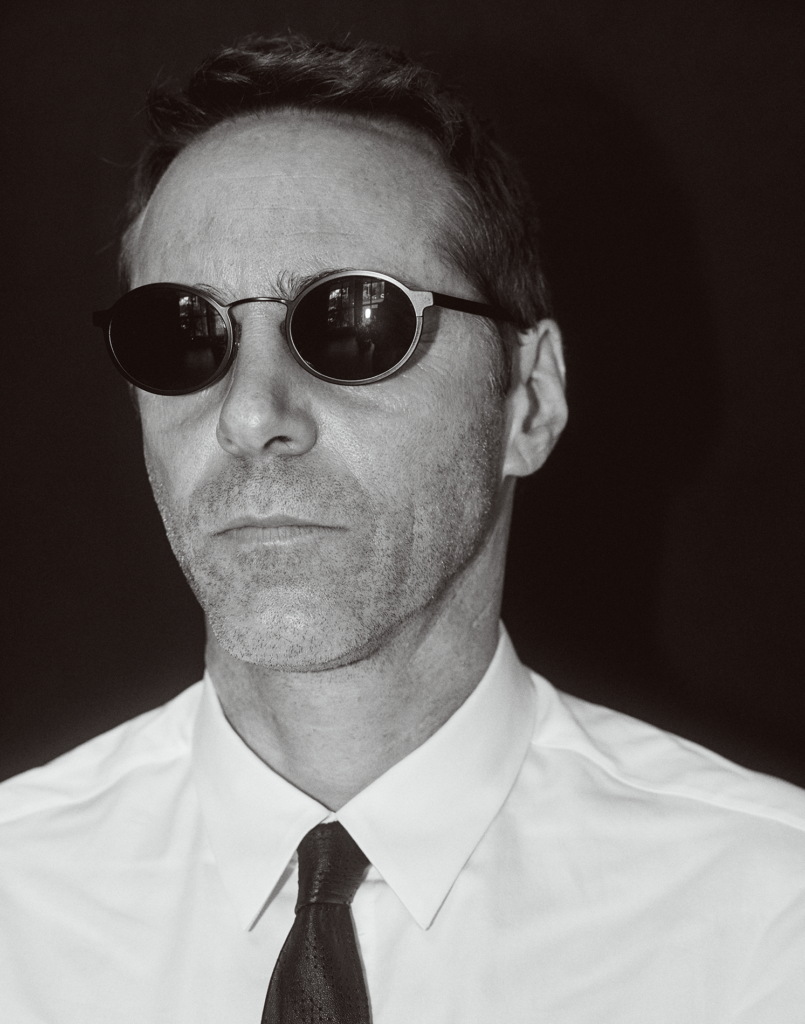
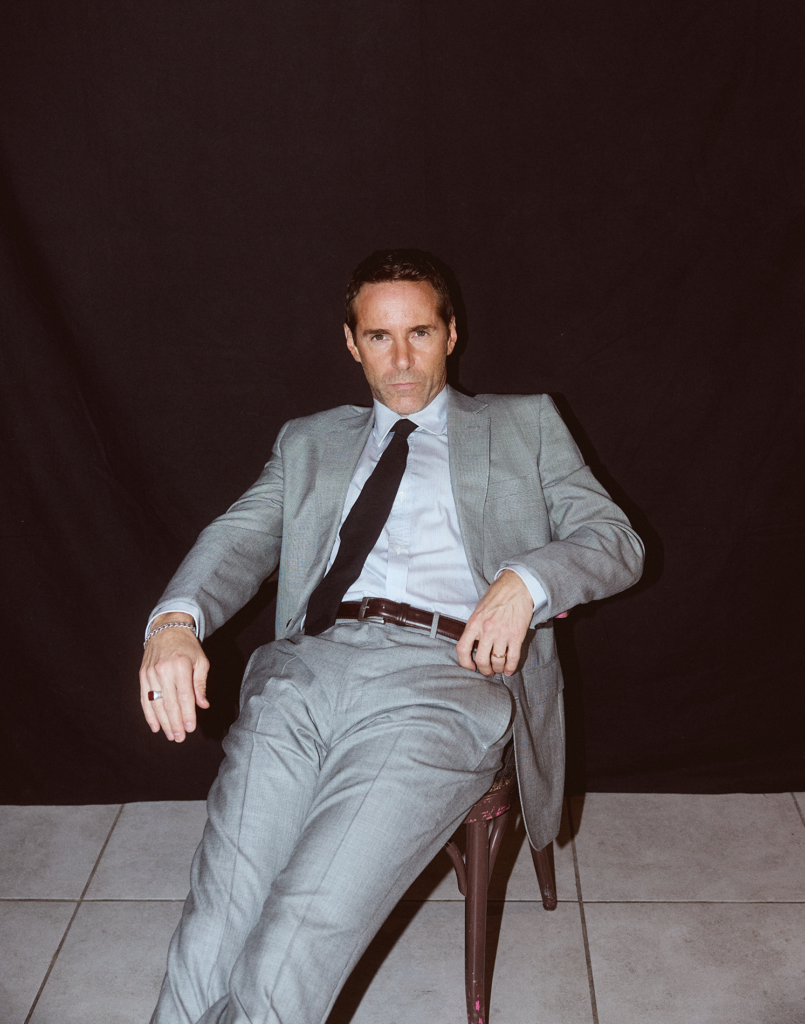
suit & shirt: DUNHILL, Tie: vintage
SH: What were the costumes like filming Kraven the Hunter? Was it mostly SFX, or was it done in post?
AN: At the beginning of the movie, I’m on safari in Africa with Russel Crowe’s character and I’m wearing a whole safari getup. The character is not naturally suited to outdoor physical activity, so I made sure that the outfit was ill-fitting and looked absurd. The story then jumps 20 years, and I have reinvented myself to become a kind of Steve Jobs looking oligarch. I decided I would have a kind of uniform like Jobs did: a crisp white button-down shirt and black chinos. And I wear that same thing in every single scene. It tells you a lot about who he is.
SH: What’s the hardest part about filming a fight scene, and what’s the best part?
AN: I’ve filmed them in the past. Not on this one as I said. I don’t like it very much. Your adrenaline is pumping, and you often injure yourself or your cast-mates. I had to fight with Ray Liotta in a car when we were filming the Sopranos prequel movie The Many Saints of Newark and I accidentally grazed his cheek with my fist during a take. He wasn’t happy about it, and neither was I. These things have to be very carefully and methodically choreographed and rehearsed but it’s still tricky. The best is when a fight reveals something about a character – that they are scared to fight, or that they can’t wait to fight, that they fight awkwardly, or were born for it etc.
SH: How was it going from playing one villain in Kraven the Hunter to a completely different one in The Brutalist?
AN: I don’t see my character Attila in The Brutalist as a villain. He’s a weak person, an immigrant trying to assimilate into American society and failing. He loves his cousin and resents him at the same time. He’s tragic in that way. Aleksei in Kraven is called “a villain”, but he too has a tragic element to his story. I was most interested in why he felt he needed to experiment with his own biology to overcome his feelings of impotence. And also, the very thing which gives him superhuman strength is too physically painful to endure, so he goes to elaborate means to keep himself in his weakened state to avoid suffering. It’s a parable of some kind – about messing with nature. Even the detective I play in Pedro Almodovar’s The Room Next Door (which opens in US theaters on the same day as The Brutalist) is a human being. He exists in the movie as an antagonist to Julianne Moore who the audience is meant to love. But he is following his own moral compass. He is deeply religious and believes euthanasia disrespects God’s creation. And he resents the easy privilege of her New York bohemian milieu. As a person, I don’t agree with him. But as an actor, I honor his logic.
SH: What’s the key to playing a “Bad Guy”?
AN: I have compassion for all the characters I play. The “bad guys” are the heroes of their own stories. They want something. They need something and they are suffering without it.
